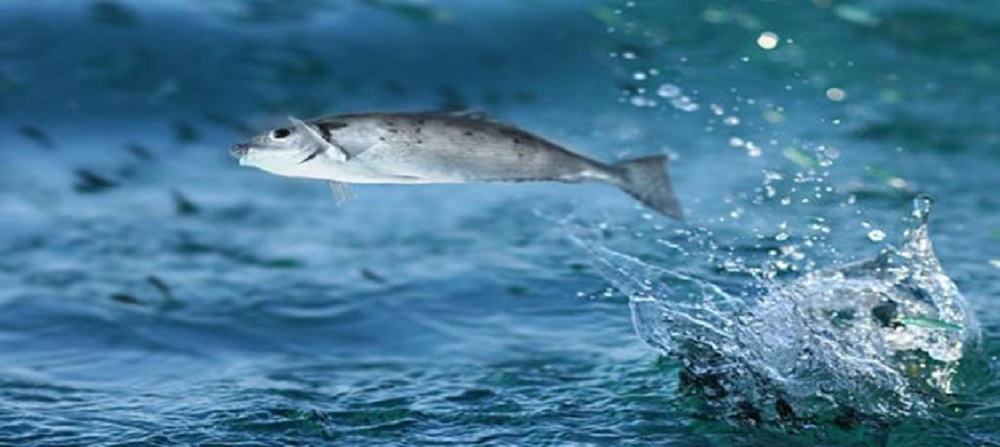How Do Fish Hear? Facts You Should Know!

Do you remember the last time when one of your friends called you to share something silly that happened in the morning class? You had so much fun lending an ear to it. Didn’t you? Telling each other these crazy stories sounds so easy; why? Because you can hear whatever your dear ones convey to you. Have you ever thought that hearing is easy for aquatic animals as it is for you? You already know that fish use “sounds” as a developed mode of communication. But how do they hear these different types of sounds? And what makes them able to do so? Let’s find out.
Sound, undoubtedly, is one of the most important sources of conveying information for animals living underwater, many invertebrates and all the vertebrates. Most of them have evolved sensory systems to detect, localize and interpret sounds in their surroundings. Could you keep reading to know more about it?
Evolved Hearing System in Fish
First, the hearing system arose in fish among all the vertebrates. This particular group of aquatic animals possesses two independent yet related sensory systems that help them detect sound.
1. Auditory system
This is the primary hearing system of fish. This sensory system for hearing consists of the inner ear and the central nervous system to help fish hear different sounds.
2. Lateral line system
The lateral line is a mechanosensory hearing system adapted by fish. They generally use it to detect different sounds like vibration and water flow.
Why Hearing Evolved in Fish?
Before we get into the details of how fish hear different types of sounds, let’s find out the answer why did hearing even evolve in aquatic animals like fish?
While we already know sound and hearing as important sources of communication, it is assumed that hearing evolved well before animals could even produce sounds with which they could communicate.
Instead, possibly, hearing systems evolved to help aquatic animals use environmental sounds (e.g. underwater geological events, waves, rain, and even sounds from other animals) to learn more about their environment.
While there is no doubt that it also found other senses in primitive fishes, detection and localization of sound was something that provided invaluable added information helping fish to thrive and survive. Considering all the senses an animal has, it is clear that each sense in an animal provides a particular type of information and thus plays its special role that enables animals to thrive and survive in their environment.
For example, chemical signals provide information to fish by hinting presence of predators or other materials in their environment through the odours they emit.
Similarly, the sense of touch proves to be very useful when the aquatic animal is close to a stimulus, but this does not work when animals are apart. Sense of vision gives information about the presence of objects at greater distances. Still, it works only when an animal is looking at the object, and its working also gets affected when there is a low light environment or at night.
On the other, the sense of sound gives information about objects present at distances beyond that provided by the vision and in multiple directions. Sound gives an animal a three-dimensional “view” of the world it is living in, and this view does not get hindered by light levels, currents, or even the presence of most objects (e.g., coral reefs or other organisms) in the environment.
What Makes Fish Hear Different Sounds?
Fish can hear, depending upon the species they belong from. They detect, localize and interpret different types of sound with the help of their organs. How do these organs make them hear certain sounds? Let’s find out.
1. The Inner Ear
Fish have the same density as freshwater. So, whenever sound passes through their bodies, they start moving in concert with the travelling sound wave. Fish possess specialized structures inside their inner ear, called otoliths. This structure is much denser than the fish’s body and surrounding Water. They are composed of calcium carbonate, and their shape and size are highly variable among different species.
Due to the density difference between the otoliths and the fish’s body, the otoliths move faster at different phases and amplitudes in response to the sound waves than the rest of the fish body.
The difference between the motion of the otoliths and the rest of the fish’s body results in the bending of the cilia on the hair cells in the fish’s inner ear. The brain interprets this differential movement between the otolith and the cilia as sound.
2. The Lateral Line System
Fishes possess organs called neuromasts in either water-filled, hollow canals or on the skin. The neuromasts are found in the tail, head and trunk. They are made up of hair cells that are the same as the inner ear. Each hair cell possesses a group of cilia on its surface, embedded in an overlying structure called a gelatinous cupula.
The hair cells of neurons help detect the motion of the surrounding Water relative to that of the fish. Fishes use their lateral line system to detect oscillatory and unidirectional flows (vibrations) at a short-range. Over a distance equal to one to two body lengths and at low-frequency ranges (0- ~200 Hz).
What Are The Sound Making Adaptations of Fish?
Depending upon the species they belong from, fish have several acoustic Adaptations. Being solitary or gregarious, prey or predators, diurnal or nocturnal, deep or shallow, deep in the ocean or near the shore, sedentary or migratory- all of them affect their acoustical adaptations both in terms of sound-making or “vocalizations” as well as hearing.
Understanding that all life has an origin in the ocean, the hearing adaptations of fish have been in the evolutionary mix up for quite some time. Following are some important relationships when it comes to the acoustic Adaptations of fish.
1. Sound in Water and time
Sound is physical energy induced in a medium due to some mechanical action imposed in that medium. The energy, which we call “acoustical energy”, is a combination of two characteristics: particle motion and pressure gradient.
The relative intensities of these two properties depend on that medium’s physical characteristics. Air is a highly compressible medium. So, pressure gradient energy seems to be more pronounced in this medium. And this is the reason why terrestrial vertebrates possess pressure-sensing diaphragms to perceive sound.
Water is not as compressible as air, so particle motion is more pronounced in Water than in air medium. It gives rise to various particle-motion acoustical adaptations found in aquatic animals.
2. Physical Hearing Adaptations
Fishes’ hearing organs include bladders, cilia (nerve hairs), ossicles, accelerometers, otoliths, and mechanoreceptors in many configurations. Some fish have all of these features, and some possess only one of them. But regardless of how complex these acoustic adaptations are, all fish that we know seem to hear and respond to sound.
The lateral line, which is seen along the side of some fishes, is made up of cilia that line the cochlea of the inner ears of terrestrial vertebrates. Some fish do not possess lateral lines, but they have cilia that function as mechanoreceptors translating that is acoustically induced pressure gradients and particle motion into the sensory system of the fish.
Does Swim Bladder Help Fish in Hearing?
Some fishes use their gas bladder, commonly called the swim bladder, to hear vibrations transmitting to their inner ear.
In many freshwater fishes (for instance, Carp), this function is enhanced by the Weberian ossicles. Weberian ossicles are a series of small bones in the fish ear connecting the front of their swim bladder to the inner ear.
Can Fish In An Aquarium Hear Us?
All of this discussion about how fish hear might have made you curious if the fish in the aquarium in your house can also hear you? My answer would be ‘absolutely yes, they do’. Fish hear the world outside Water, but their hearing system doesn’t work like mammals. Rather, they sense vibrations created in the Water around them by using their lateral line system, the tiny dots running along the sides of their body. Although the fish in your aquarium aquariums can easily pick up the sound of your voice, it isn’t that clear or even understandable to them.
Read More
Why Is My Betta Fish Swimming Sideways?
Conclusion
Summing up the entire discussion in a conclusion that almost all the fish hear, but their hearing system doesn’t work the way it does. Their hearing capabilities are quite different from those of us. Although, both human beings and fish can hear. But, there is a difference in the range of audible frequencies, which both can hear in these groups. Two parts of the body, the inner ear and the lateral line system, have that evolved hearing system, which helps fish detect, detect, and interpret different types of sound. Bending the cilia on the inner ear creates vibration, which helps fish hear. While the lateral line system also uses vibration. As a result, fish can hear different sounds. The interesting point is that fish in our aquariums can also hear us.



